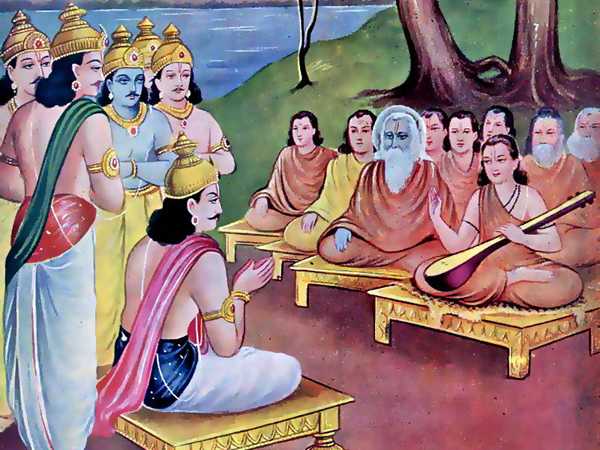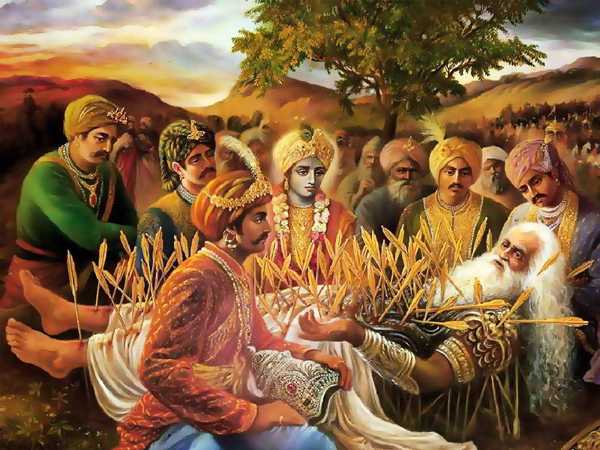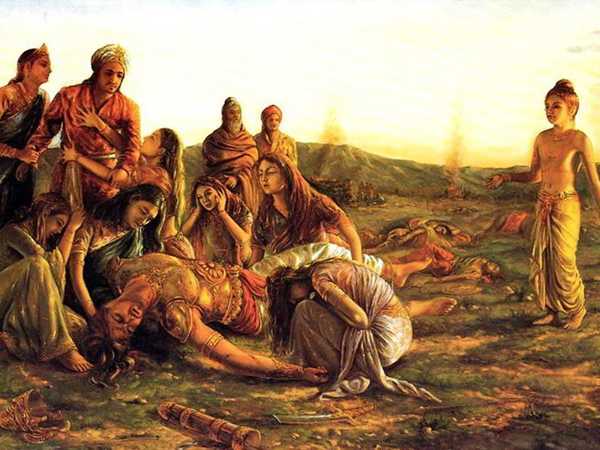Chapter 317

“Yajnavalkya said, I have already spoken to thee of the science of theSankhyas. Listen now to me as I truly discourse on the science of theYogins as heard and seen by me, O best of kings! There is no knowledgethat can compare with that of the Sankhyas. There is no puissance thatcompares with that of Yoga. These two ordain the same practices, and bothare regarded as capable of leading to Emancipation. Those men that arenot blest with intelligence regard the Sankhya and the Yoga systems to bedifferent from each other. We, however, O king, look upon them as one andthe same, according to the conclusion to which we have arrived (afterstudy and reflection). That which the Yogins have in view is the verysame which the Sankhyas also have in view. He who sees both the Sankhyaand the Yoga systems to be one and the same is to be regarded as trulyconversant with the topics or principles that ordain the universe. Know,O king, that the vital breaths and the senses are the chief means forpractising Yoga. By only regulating those breaths and the senses, Yoginswander everywhere at their will.[1655] When the gross body is destroyed,Yogins endued with subtile bodies possessed of the eight Yoga attributesof Anima, Laghima, Prapti, etc., wander over the universe, enjoying (inthat body) all kinds of felicities, O sinless one. The wise have, in thescriptures, spoken of Yoga as conferring eight kinds of puissance. Theyhave spoken of Yoga as possessed of eight limbs.[1656] Indeed, O king,they have not spoken of any other kind of Yoga. It has been said that thepractices of Yogins excellent as these are (for their results), are oftwo kinds. Those two kinds, according to the indications occurring in thescriptures, are practices endued with attributes and those freed fromattributes. The concentration of the mind on the sixteen objects named,with simultaneous regulation of the breath, O king, is one kind. Theconcentration of the mind in such a way as to destroy all differencebetween the contemplator, the object contemplated, and the act ofcontemplation along with subjugation of the senses, is of another kind.The first kind of Yoga is said to be that possessed of attributes; thesecond kind is said to be that freed from attributes.[1657] Then, again,Regulation of the breath is Yoga with attributes. In Yoga withoutattributes, the mind, freed from its functions, should be fixed. Only theregulation of the breath which is said to be endued with attributesshould, in the first instance, be practised, for, O ruler of Mithila, ifthe breath (that is inhaled and suspended) be exhaled without mentallyreflecting the while upon a definite image (furnished by a limitedmantra), the wind in the neophyte’s system will increase to his greatinjury.[1658] In the first Yama of the night, twelve ways of holding thebreath are recommended. Alter sleep, in the last Yama of the night, othertwelve ways of doing the same have been laid down. Without doubt, oneendued with tranquillity, of subdued senses, living in retirement,rejoicing in one’s own self, and fully conversant with the import of thescriptures, should (regulating one’s breath in these four and twentyways) fix one’s Soul (on the Supreme Soul).[1659] Dispelling the fivefaults of the five senses, viz., (withdrawing them from their objects of)sound, form, touch, taste, and scent, and dispelling those conditionscalled Pratibha and Apavarga, O ruler of the Mithilas, all the sensesshould be fixed upon the mind. The mind should then be fixed onConsciousness, O king, Consciousness should next be fixed on intelligenceor Buddhi, and Buddhi, should then be fixed on Prakriti. Thus mergingthese one after another, Yogins contemplate the Supreme Soul which isOne, which is freed from Rajas, which is stainless, which is Immutableand Infinite and Pure and without defect, who is Eternal Purusha, who isunchangeable, who is Indivisible, who is without decay and death, who iseverlasting, who transcends diminution, and which is Immutable Brahma.Listen now, O monarch, to the indications of one that is in Yoga. All theindications of cheerful contentment that are his who is slumbering incontentment are seen in the person, that is in Samadhi. The person inSamadhi, the wise say, looks like the fixed and upward flame of a lampthat is full of oil and that burns in a breezeless spot. He is like arock which is incapable of being moved in the slightest degree by ever aheavy downpour from the clouds. He is incapable of being moved by the dinof conches and drums, or by songs or the sound of hundreds of musicalinstruments beat or blown together. Even this is the indication of one inSamadhi. As a man of cool courage and determination, while ascending aflight of steps with a vessel full of oil in his hands, does not spilleven a drop of the liquid if frightened and threatened by persons armedwith weapons even so the Yogin, when his mind has been concentrated andwhen he beholds the Supreme Soul in Samadhi, does not, in consequence ofthe entire stoppage of the functions of his senses at such a time, movein the slightest degree. Even these should be known to be the indicationof the Yogin while he is in Samadhi. While in Samadhi, the Yogin beholdsBrahma which is Supreme and Immutable, and which is situated like ablazing Effulgence in the midst of thick Darkness. It is by this meansthat he attains, after many years, to Emancipation after casting off thisinanimate body. Even this is what the eternal Sruti declares. This iscalled the Yoga of the Yogins. What else is it? Knowing it, they that areendued with wisdom regard themselves as crowned with success,–



